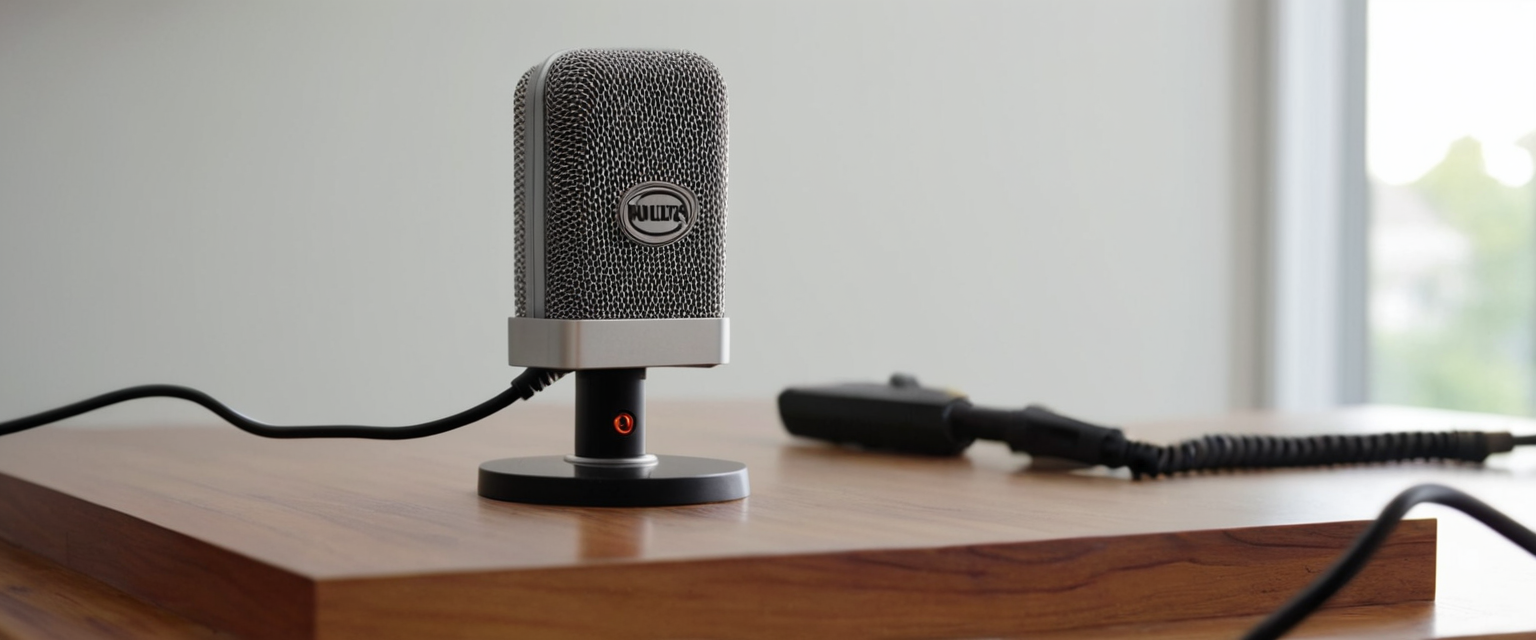
Recent academic research has revealed a critical privacy vulnerability in contemporary digital communications: the widespread assumption that pressing a mute button on video conferencing applications actually stops microphone data collection is fundamentally incorrect. This report analyzes the emerging landscape of external hardware mute switches as a practical defensive measure against unauthorized audio capture, examining the technical distinctions between software and hardware-based muting, evaluating when deployment of these devices provides meaningful privacy protection, and synthesizing evidence-based recommendations for implementing these tools in professional, educational, and personal computing environments. The research demonstrates that while software mutes often fail to provide the privacy assurance users expect, external hardware mute switches—particularly those that physically disconnect microphone circuits rather than merely suppressing audio output—represent a robust alternative for users seeking tangible control over their audio capture devices.
Technical Foundations: Understanding Hardware Versus Software Microphone Muting
The fundamental distinction between hardware and software-based microphone control mechanisms requires careful examination because this distinction carries profound implications for privacy assurance. When a user presses a mute button in a software application like Zoom, Microsoft Teams, or Google Meet, they typically expect that their microphone will cease recording audio and no data from the device will be transmitted to remote servers. However, contemporary research conducted at universities including the University of Wisconsin-Madison and Loyola University Chicago reveals a far more complex reality. These studies, which employed runtime binary analysis tools to trace raw audio as it traversed from the application to the audio driver and through the network infrastructure, discovered that software mutes operate through application-level mechanisms rather than hardware-level disconnection. This crucial distinction means that the operating system and hardware drivers remain fully engaged with the microphone, continuing to capture and process audio data even when an application’s user interface displays a “muted” status.
Software-based muting functions by essentially telling the application to ignore or suppress the microphone input at the application layer, but this does not halt the underlying hardware device from continuing its constant surveillance of the acoustic environment. In contrast, external hardware mute switches operate by physically interrupting the electrical circuit between the microphone sensor and the computer’s audio input system. When properly implemented, a hardware switch severs the connection entirely, making it physically impossible for any software process, malware, or compromised driver to access the microphone signal. The difference can be conceptualized through an analogy: a software mute resembles closing your eyes while remaining in a room full of people, whereas a hardware mute resembles physically leaving the room entirely.
Understanding the architectural design of modern computing devices illuminates why this distinction matters profoundly. Within most laptops and computers, microphones connect through USB or 3.5-millimeter audio jacks to the host controller interface, which then routes the audio signal through driver software and into the operating system kernel. At each stage in this pipeline, software processes can theoretically intercept, record, or transmit the audio stream. Remote access trojans (RATs), malware specifically designed to provide attackers with comprehensive control over computing devices, can compromise any element within this software stack to enable unauthorized audio surveillance. Furthermore, vulnerabilities in operating system kernels or driver firmware can be exploited to enable microphone access even when supposedly disabled through software controls. A particularly instructive historical example involves Apple’s implementation of webcam indicators in their iSight camera systems, where researchers demonstrated that attackers with sufficient privileges could modify the kernel extension controlling the camera activation indicator light, enabling video capture while keeping the indicator light off—creating a false impression of privacy.
Hardware mute switches physically bypass this entire software pipeline by operating at the circuit level. Devices like the Framework laptop and Purism Librem computers implement kill switches that move a physical barrier into the circuit path, creating what amounts to an air gap that no software process can overcome. Even a fully compromised system with attackers possessing root-level access cannot enable a microphone when a hardware kill switch has physically severed the circuit. This principle of “defense in depth” suggests that when privacy represents a genuine concern—whether motivated by professional confidentiality requirements, legal obligations, or reasonable personal privacy expectations—relying solely on software controls introduces an unacceptable vulnerability.
The Privacy Research Landscape: Evidence That Software Mutes Provide False Assurance
The urgency of understanding external hardware mute switches becomes immediately apparent when examining the research evidence documenting how extensively modern video conferencing applications continue collecting audio data even when users believe they have activated mute. A comprehensive study presented at the Privacy Enhancing Technologies Symposium analyzed the actual microphone behavior of ten major video conferencing applications: Zoom, Slack, Microsoft Teams, Google Meet, Cisco Webex, BlueJeans, WhereBy, GoToMeeting, Jitsi Meet, and Discord. The researchers conducted this analysis across multiple operating systems including Windows, macOS, Linux, and web browsers, employing sophisticated runtime instrumentation to observe exactly what happens to audio data when users activate the mute button.
The results revealed profoundly troubling patterns. All applications tested occasionally gathered raw audio data while the mute button was activated, with notably different behaviors across applications. Zoom demonstrated what the researchers characterized as “decent” behavior by not continuously capturing the audio stream while muted, though it did periodically query the microphone to measure ambient noise levels so it could remind users when they attempted to speak while muted. Microsoft Teams proved more complicated, utilizing direct communication with Windows audio subsystems rather than standard operating system APIs, making the researchers unable to fully characterize its microphone behavior. However, Cisco Webex demonstrated the most egregious behavior: the application continuously processed sound from the microphone regardless of the mute button state, transmitting telemetry data derived from the audio stream to Webex servers at the same rate whether the application was muted or not. This behavior contradicted Webex’s own privacy policy, which did not disclose ongoing microphone access during muted periods.
The implications of this continuous telemetry transmission proved even more disturbing when researchers explored what information could be extracted from the metadata alone. Using machine learning algorithms trained on YouTube audio samples representing six common background activities—cooking, eating, playing music, typing, cleaning, and vacuum cleaning—the researchers achieved 81.9 percent macro accuracy in identifying ongoing background activities solely from analyzing the telemetry packets Cisco Webex transmitted while the user’s microphone was supposedly muted. This finding demonstrates that even when actual audio content is not being transmitted, the patterns of acoustic energy reaching the microphone can reveal remarkably detailed information about a user’s private activities. A user cooking dinner, cleaning their home, or engaging in other personal activities might reasonably expect that pressing the mute button before a video conference begins would prevent the conferencing service from knowing they were thus engaged. The research proves this assumption false.
Subsequent investigation by the same research team revealed that user expectations diverge substantially from actual application behavior. When surveyed, 77.5 percent of video conferencing app users indicated they would find it unacceptable for applications to access the microphone and potentially gather data when the mute mode was active. Yet most of the users tested appeared unaware that this unacceptable behavior was occurring within the applications they used daily. The researchers conducted a user study of 223 video conferencing app users and discovered fundamental misunderstandings about how mute buttons actually function. While most participants indicated that video conferencing applications should access the microphone only when unmuted, a concerning dichotomy emerged in their actual beliefs: participants remained split about whether applications actually accessed the microphone after clicking the mute button, suggesting significant confusion about what the mute button truly controls.
This disconnect between user expectations and technical reality creates substantial privacy risks, particularly in high-stakes environments. The research emphasized that video conferencing applications have become ubiquitous tools for sensitive communications involving government officials, national security personnel, financial services executives, legal professionals, and healthcare workers. Data exfiltration from these contexts, even in the form of acoustic metadata suggesting background activities, could enable sophisticated inference attacks about user locations, activities, and circumstances that no legitimate business purpose would justify collecting. The fundamental problem addressed by external hardware mute switches becomes unavoidable when considered in this context: users need a mechanism for ensuring microphone access termination that does not depend on application integrity, driver honesty, or operating system fidelity.
When to Deploy External Hardware Mute Switches: Use Case Analysis
Determining optimal contexts for deploying external hardware mute switches requires nuanced analysis that weighs practical privacy threats, user workflow requirements, and the relationship between protection methods and actual attack scenarios. Not all users in all contexts require external hardware mute switches, and deployment in inappropriate contexts may introduce unnecessary complexity and cost. However, specific categories of professional activity, legal obligations, and security concerns create compelling reasons to implement these technologies.
Professional Environments Handling Confidential Information
Organizations operating within legal and regulatory frameworks that impose strict confidentiality requirements represent the most clearly justified use case for external hardware mute switches. Healthcare organizations subject to HIPAA regulations, law firms handling protected client information, financial services firms managing sensitive account data, and government agencies processing classified materials all operate under frameworks explicitly prohibiting unauthorized disclosure of protected information. Within these contexts, even the theoretical possibility that microphones might transmit acoustic metadata to external servers represents an unacceptable compliance risk. A healthcare provider conducting a video conference about a patient’s medical condition, a lawyer discussing privileged client communications, or a government official handling classified intelligence cannot reasonably accept the risk that audio metadata might be collected by third-party services without explicit authorization.
The practical implementation challenges within these contexts often prove manageable because the relevant institutions already maintain sophisticated information security infrastructure. Government secure facilities like Sensitive Compartmented Information Facilities (SCIFs) typically prohibit wireless microphones entirely and restrict external microphones to government-procured devices with specific security properties. Healthcare organizations increasingly utilize dedicated secure video conferencing infrastructure rather than consumer-grade conferencing platforms, potentially eliminating some microphone surveillance risks at the infrastructure level. However, external hardware mute switches provide an additional control layer that defense-in-depth security practices recommend, particularly for portable devices used in multiple environments where ensuring consistent security posture proves challenging.
Remote Work and Home Office Environments
The explosive growth in remote work following the 2020 pandemic created a secondary category of important use case for external hardware mute switches: home-based office environments where users conduct employer business but cannot control the physical space comprehensively. A remote worker using a shared laptop for both personal and professional activities faces genuine uncertainty about when employer software might access the microphone. While major employers typically implement mobile device management policies restricting microphone access, users cannot verify that such restrictions actually function as intended without deploying external monitoring or hardware mute switches. External hardware mute switches provide tactile assurance that when switched to off position, no software process can access the microphone regardless of what background processes might be running on the device.
Furthermore, remote workers frequently conduct video conferences in shared living spaces with family members or housemates. The acoustic environment of these spaces often contains sensitive private conversations unrelated to work—discussions about personal finances, health matters, family conflicts, or other inherently private topics. Research on video conferencing mute button behavior demonstrates that background activity inference from acoustic metadata is entirely feasible. A remote worker cannot guarantee that their employer’s chosen conferencing platform will not collect acoustic metadata during muted periods, and they reasonably might not want their employer’s systems to infer that they were discussing personal medical issues or family conflicts during the workday, even through acoustic patterns rather than actual audio content.
Content Creation and Streaming Contexts
Professional content creators and esports gamers operating live streaming platforms represent an emerging use case where external hardware mute switches provide direct functional benefits beyond privacy assurance. Gaming headsets with integrated flip-to-mute microphone mechanisms, discussed in extensive detail within the gaming community, demonstrate how mechanical mute controls that do not depend on software state provide critical reliability. When a professional esports player or streaming content creator is broadcasting live to audiences, losing control of microphone state due to a software update, application crash, or unintended button press creates immediate reputational and financial consequences. Unlike mute buttons that depend on software state, physical mute switches work identically across all platforms and operating systems because they operate mechanically rather than through software.
The Luxafor Mute Button and MuteMe external controllers represent practical implementations of this principle, providing illuminated physical buttons that allow users to mute their default microphone across all applications simultaneously without requiring application-specific mute buttons. Professional streamers using these devices report substantially reduced stress because they can visually confirm mute status through the illuminated indicator without navigating to the video conferencing application interface. In high-pressure competitive gaming contexts where seconds of distraction can determine tournament outcomes, having immediate hardware confirmation of mute status provides measurable competitive advantage.
Legal and Regulatory Compliance Contexts
Certain professions operate under explicit regulatory obligations requiring demonstrated microphone controls. The Department of Defense explicitly prohibits specific types of microphones in secure facilities and requires that where microphones are permitted, they must incorporate specific security properties including hardware mute capabilities in certain contexts. Intelligence agencies, federal law enforcement, and national security organizations operate under similar restrictions. For professionals in these contexts, deploying external hardware mute switches often represents not optional enhancement but mandatory compliance requirement.
Additionally, legal discovery processes increasingly scrutinize audio capture methodologies. Attorneys concerned about inadvertent recording of privileged communications during sensitive client discussions may implement external hardware mute switches as a tangible control demonstrating good-faith effort to prevent unauthorized recording. While such switches cannot guarantee that sophisticated attackers will not find workarounds, they demonstrate reasonable security posture that compliance officers and legal advisors can point to as evidence of appropriate privacy protection.

Personal Privacy Advocates
A final important use case comprises individuals who simply believe that personal privacy should not require trust in corporate or government entities. This group may include journalists, activists, dissidents in repressive regimes, or individuals who simply hold privacy as a fundamental value worthy of protection regardless of specific professional context. For these individuals, external hardware mute switches serve as tangible expression of agency and control over personal information. Unlike software-based solutions that require faith in the good intentions and technical competence of device manufacturers and software developers, hardware switches represent user control that cannot be circumvented through software update or corporate policy change.
Journalists reporting on sensitive topics particularly benefit from hardware mute switches because their professional obligations create special privacy interests. Research by Human Rights Watch documented how journalists and lawyers adapted their practices in response to revelations of large-scale government surveillance capabilities. External hardware mute switches align with broader operational security practices that journalists adopt when reporting on sensitive topics, allowing them to physically disconnect microphones when discussing sources or sensitive information with sources in ways that complement encryption and other security practices.
Implementations and Product Landscape: Evaluating Available External Hardware Mute Solutions
The external hardware mute switch market encompasses multiple distinct implementation approaches, each offering different security properties, user experience characteristics, and practical tradeoffs. Understanding these distinctions proves essential for selecting appropriate solutions for specific contexts.
Dedicated USB-Based Mute Buttons
The most straightforward category of external hardware mute switches comprises dedicated USB-connected buttons that provide hardware-level control over system microphone state. The Luxafor Mute Button and MuteMe represent prominent implementations in this category. These devices connect via USB to the computer and provide a physical button that, when pressed, mutes the default system microphone for all applications simultaneously. The appeal of this approach lies in simplicity and universal compatibility: regardless of which video conferencing application users employ, the external mute button controls microphone access at the operating system level rather than requiring application-specific mute button interaction. The On Air Warning w/ MuteKit, Luxafor Mute Button, and MuteMe illuminated mute button are prominent examples of this technology.
The Luxafor Mute Button specifically includes color-coded LED indicators showing mute status (red when muted, green when active), allowing users at a glance to confirm whether their microphone is currently accessible to applications. This visual feedback addresses a critical usability issue: without such indicators, users cannot easily distinguish between muted state and other system conditions. The MuteMe device offers similar functionality with illuminated indicators and proprietary software that synchronizes the physical button state with mute status across popular video conferencing platforms, ensuring that if an application independently mutes the microphone, the MuteMe interface reflects this state.
However, these USB-based solutions operate partially through software logic on the client device. While they physically interrupt the audio path when activated, the implementation still depends on driver software and application cooperation to function properly across different platforms. If a software process somehow manages to re-enable the microphone after the USB mute button activates it, theoretical vulnerabilities might exist. Nevertheless, these devices represent a substantial improvement over application-level mutes because they operate at a layer below individual applications, giving users an additional control point independent of any specific software vendor.
Hardware Kill Switches: Complete Circuit Disconnection
At the opposite end of the implementation spectrum from USB-based mute buttons lie comprehensive hardware kill switches that physically sever the entire microphone circuit at the component level, making hardware-level re-enablement the only possible recovery mechanism. Computers manufactured by Purism and Framework implement this approach, installing mechanical switches that physically break the circuit connecting the microphone to the system, rendering it impossible for any software process to enable the microphone when the switch is in the off position.
The Framework laptop design particularly exemplifies this approach with transparently visible implementation that allows technically advanced users to physically inspect the circuitry and verify that the switch actually disconnects the microphone circuit. When the kill switch is in the off position, no possible software manipulation—including root access, kernel modifications, or firmware changes—can enable the microphone because the physical circuit is broken. This represents the absolute maximum privacy assurance available through current technology.
The practical tradeoff involves complexity and user experience. Framework laptops require users to physically access the device’s bezel to activate the microphone kill switch, making the operation less convenient than dedicated external mute buttons. Additionally, these integrated kill switches are only available on specific device models manufactured by privacy-focused vendors, limiting their applicability to users who specifically purchase these devices. For users already committed to privacy-respecting hardware vendors, these integrated solutions provide optimal security. However, users who cannot replace their existing devices cannot easily access this approach.
Specialized Microphone Blocking Accessories
Beyond dedicated mute buttons, a category of microphone blocking accessories provides physical impedance to audio transmission through non-electronic methods. Magnetic microphone covers that physically block sound from reaching the sensor represent one simple approach, though such accessories do not address the underlying issue that the microphone hardware remains electronically active and could theoretically be read at the hardware level by sufficiently sophisticated attacks. More sophisticated approaches involve dummy microphones plugged into audio jacks to trick operating systems into disabling built-in microphones, or strategically applied tape over microphone openings.
The dummy microphone approach exploits how many laptops disable built-in microphones when external microphones connect, assuming users prefer the external device. By plugging an inert dummy microphone into the jack, a user can cause the system to disable built-in microphones while the dummy remains non-functional, effectively creating an air gap without any microphone being available to the system. However, this approach requires the laptop to have a 3.5-millimeter audio jack, which many modern laptops lack. Additionally, it produces a confusing user experience where the operating system reports no microphone available even though one exists, potentially causing applications to malfunction.
Physical tape covering microphone openings represents a primitive but entirely non-electronic approach with no vulnerability to software compromise. Some privacy-conscious users employ this method despite its crude character, accepting the minor inconvenience of removing and replacing tape for legitimate microphone use. The approach provides absolute assurance that sound cannot reach the microphone sensor when tape covers the opening, though it does not address theoretical hardware-level microphone access and represents an unsightly user experience.
Video Conferencing Platform Integrations
Some video conferencing platforms have begun implementing their own microphone control mechanisms with varying degrees of robustness. Cisco WebEx, following the privacy research revealing continuous audio access during muted periods, modified its system to cease microphone data collection in January 2022. However, these platform-specific modifications represent application-level changes rather than hardware-level control, maintaining the fundamental limitation that users must trust the platform provider’s implementation.
Furthermore, these platform-specific solutions do not address the broader problem that multiple video conferencing applications might be active simultaneously on a single computer, and a user cannot selectively mute individual applications while leaving others with microphone access. External hardware mute buttons that operate at the operating system level provide more comprehensive control by disconnecting microphone access entirely, regardless of which applications might attempt to activate the microphone.
Comparative Analysis: Hardware Mute Switches Versus Alternative Privacy Approaches
Understanding when external hardware mute switches represent the optimal privacy solution requires comparing them to alternative approaches for protecting microphone privacy, evaluating the specific advantages and limitations of each method.

Hardware Kill Switches Compared to Software-Only Privacy Controls
Software-only microphone privacy controls—such as Windows or macOS permission settings that restrict specific applications from accessing the microphone—offer the advantage of convenience and granularity. Users can selectively permit some applications to access microphones while denying access to others through operating system dialogs. No hardware replacement is required, and users can modify permissions frequently without physical manipulation.
However, software-only controls suffer from fundamental architectural limitations. An application or malware with sufficient system privileges can modify permission settings or bypass software restrictions entirely. The research on video conferencing mute buttons demonstrates that even well-resourced companies with significant security budgets implement microphone access patterns that contradict users’ privacy expectations. Assuming that desktop operating systems will perfectly enforce software-based microphone restrictions requires faith in the perfection of millions of lines of security-critical code—a faith that repeated security vulnerabilities consistently prove unfounded.
External hardware mute switches improve upon software-only approaches because they operate independently of software state. Even if an application or malware somehow circumvents operating system permission restrictions, a hardware mute switch with proper circuit disconnection prevents access to the microphone signal. The added security justifies the slight inconvenience for users with genuine privacy concerns.
Hardware Mute Switches Compared to Personalized Noise Defenses
Researchers have proposed an alternative microphone defense approach using injected obfuscating noise to make microphone recordings unintelligible to both automated and human-based analysis. The concept involves playing specially designed “babble noise” through speakers that confuses automated speech recognition systems attempting to extract meaning from microphone recordings. This approach theoretically allows legitimate microphone use while preventing attackers from extracting intelligible information from captured audio.
While intellectually interesting, personalized noise defenses suffer from practical limitations compared to hardware mute switches. First, they do not actually prevent microphone surveillance—they merely attempt to degrade signal quality. Sufficiently determined attackers could potentially apply signal processing techniques to filter noise and recover underlying speech. Second, noise defenses would require constant active deployment during any period when privacy is desired, consuming power and creating acoustic nuisance. Hardware mute switches operate passively and only consume power during the switching event itself. Third, and most practically, most office environments, educational institutions, and professional contexts would prohibit the constant background noise that personalized defenses would require.
Hardware mute switches provide simpler, more reliable privacy assurance by eliminating microphone access entirely rather than attempting to degrade captured audio quality. For professional contexts, this represents a substantially preferable approach.
Analog Versus Digital Muting: The Importance of Circuit-Level Disconnection
A crucial distinction exists between external hardware mute switches that achieve their effect through analog circuit disconnection versus those implemented through digital mechanisms. Purely digital implementations that leverage operating system APIs to disable microphones still depend on software integrity and might be vulnerable to sophisticated firmware-level attacks or driver compromises. Analog circuit-level muting that physically breaks the connection between the microphone sensor and the audio input achieves disconnection below the level that software processes can intercept.
Framework laptops specifically implement this principle with optical switches that physically block light transmission when switched to off position, creating an absolutely clear physical barrier that digital examination can verify. This represents the gold standard of external hardware mute implementation because it eliminates any possibility of software re-enablement.
In contrast, USB-based mute buttons like Luxafor and MuteMe achieve their effect through driver-level control that prevents audio data transmission but theoretically still relies on driver software remaining functional and uncompromised. While substantially superior to application-level muting, these approaches do not quite reach the theoretical perfection of pure circuit disconnection. For most practical purposes, this distinction may be academic, but for users with the highest privacy requirements, the difference remains meaningful.
Integration with Video Conferencing Workflows: Practical Implementation Considerations
Successfully deploying external hardware mute switches requires careful integration with existing video conferencing workflows and consideration of how users actually operate in these environments. Technical privacy protection proves useless if it creates workflow impediments that users bypass due to frustration.
Research on flip-to-mute microphone implementations in gaming headsets reveals that users significantly prefer mechanical mute mechanisms to button-based approaches because mechanical switches provide more intuitive feedback and require less cognitive effort to activate reliably. When users engage in high-stress activities like competitive gaming or intense professional video conferences, cognitive load increases and the risk of inadvertent microphone failures grows. Simple mechanical switches reduce cognitive burden by requiring only physical motion that users can execute quickly without navigating complex interface menus.
For remote work environments where users frequently transition between muted and active states during long video conferences, external hardware mute switches should be positioned for ergonomic accessibility. A device placed on a desk next to the keyboard allows users to toggle mute status without shifting visual attention from the conference application. Visual indicators proving critical so users can maintain peripheral awareness of mute status without requiring conscious attention to application interface elements.
In professional contexts with security requirements, IT departments should consider whether deployed external mute switches should provide logging or audit trail capabilities indicating when muting events occurred. Some organizations might want to document that microphone disconnection occurred during sensitive discussions as part of information security governance. This represents a non-standard feature that typical consumer-oriented mute buttons do not provide but that could be developed for enterprise contexts.
Security Implications and Threat Model Considerations
The appropriate deployment of external hardware mute switches depends fundamentally on realistic threat modeling that asks what adversaries users actually need to defend against and whether hardware mute switches address those threats effectively.
Consider a threat model where the adversary is a malicious application or software process operating on the user’s device. This could include ransomware, spyware, or compromised software installed by attackers. Hardware mute switches address this threat comprehensively because they operate independently of software state and cannot be circumvented by any application-level attack.
Consider a different threat model where the adversary has physical access to the device and can manipulate hardware at the component level. In this scenario, sophisticated attackers might replace the microphone with a surveillance device, modify the hardware mute switch mechanism to make it non-functional, or install chips at deeper hardware levels that capture audio before it reaches the obvious microphone component. Hardware mute switches provide no defense against adversaries with this level of physical access. However, for typical organizational security contexts, this threat model applies primarily to classified government facilities operating in genuinely hostile environments. For mainstream corporate environments and personal use, this threat model remains largely theoretical.
Consider a third threat model where the adversary is an internet-based attacker attempting remote code execution on the device. In this scenario, the attacker would need to execute code with sufficient privileges to either bypass hardware mute switches or exploit the microphone before the mute switch takes effect. Properly implemented hardware mute switches positioned in the analog circuit path interrupt audio before any software can access it, providing strong defense.
The realistic threat model for most professionals using external hardware mute switches involves protecting against compromised applications or malware capturing audio without permission, not defending against sophisticated nation-state actors with physical access to devices or ability to implant microchip-level surveillance. For this threat model, external hardware mute switches provide substantial, meaningful protection that software-only approaches cannot match.
Emerging Standards and Future Developments
The landscape of microphone privacy protection continues evolving, with emerging hardware standards potentially addressing vulnerabilities in current implementations. Microsoft’s guidance on hardware-based privacy shutters and kill switches, developed in coordination with device manufacturers, represents official recognition that hardware-level microphone controls should become standard features rather than exceptional privacy-focused options. Windows driver documentation now specifies expected behaviors for privacy shutters and kill switches, creating compatibility standards that device manufacturers should follow.
Additionally, some research institutions are exploring more sophisticated microphone defense approaches. The Defense Advanced Research Projects Agency (DARPA) has funded investigations into how advanced privacy controls might be embedded at the firmware and driver level, potentially creating defenses that are superior to software-only controls but more practical than full circuit disconnection. These emerging approaches might eventually provide standard features in mainstream devices rather than requiring purchase of specialty privacy-focused equipment.
Furthermore, recognition of privacy concerns has motivated some conventional computer manufacturers to begin offering microphone disconnect capabilities on mainstream devices. The concept of hardware disconnects is gradually transitioning from privacy-focused niche products to features that mainstream users might reasonably expect on professional-grade computers. This represents meaningful progress in making microphone privacy protection accessible to broader populations.
Practical Recommendations for Implementation
Based on the comprehensive evidence reviewed, specific practical recommendations emerge for different user categories regarding when and how to deploy external hardware mute switches.
For government and national security personnel operating in secure facilities, hardware kill switches should be standard on all devices used in those environments. Organizations should implement microphone disconnection at the circuit level and maintain documentation of proper function as part of facility security protocols. External USB-based mute buttons provide insufficient assurance for contexts where classified information is discussed.
For healthcare organizations subject to HIPAA compliance, deploying external hardware mute switches on computers used for telemedicine or video consultations where patient information will be discussed represents reasonable security practice. The modest cost of these devices is justified by the protection they provide against unauthorized audio capture of protected health information.
For remote workers employed by organizations handling sensitive information, external USB-based mute buttons like Luxafor or MuteMe provide practical compromise between security and convenience. These devices are portable, easy to deploy on existing computers, and provide assurance that microphone access is disconnected at the operating system level regardless of which application is active. Cost is low enough that organizations could reasonably provide them to all remote workers as standard security equipment.
For legal professionals handling privileged communications, external hardware mute switches align with professional obligations to protect client information and demonstrate good-faith security practices. These devices could be deployed in law offices and made available to all attorneys as part of information security governance.
For individual privacy advocates or journalists, purchasing personally-owned Framework laptops with integrated microphone kill switches or deploying external USB mute buttons on existing devices represents reasonable privacy protection. The modest cost is justified by the importance of microphone privacy for professionals who must protect sources and sensitive information.
For ordinary users without specific professional privacy requirements, software-based microphone controls in operating systems provide adequate protection for typical threat models. External hardware mute switches represent optional enhancement rather than necessary security measure. However, for users who share devices with family members or in situations where physical workspace control is limited, external mute switches still provide meaningful value by preventing background activity inference through acoustic telemetry.
Making Your External Mute Choice
External hardware mute switches represent a meaningful enhancement to microphone privacy protection in an era when software-based muting has proven demonstrably inadequate to protect user privacy expectations. The academic research documenting how widely-deployed video conferencing applications continue collecting audio data during supposedly muted periods provides clear evidence that users cannot rely on application-provided mute buttons as privacy controls. The ability of researchers to infer detailed information about background activities from acoustic telemetry metadata demonstrates that even when actual audio content is not transmitted, the patterns of microphone data collection create privacy risks.
External hardware mute switches address this vulnerability by operating independently of application software, creating additional control points that users can employ to disconnect microphone access entirely. Different implementations ranging from dedicated USB mute buttons to integrated circuit-breaking hardware kill switches provide varying security properties suited to different threat models and user requirements. For professional contexts handling confidential information, for remote workers in shared environments, for content creators requiring reliable audio control, and for privacy advocates valuing tangible control over personal information, external hardware mute switches provide genuine privacy assurance that software-only solutions cannot match.
However, external hardware mute switches are not universal solutions applicable to all contexts equally. Most mainstream users with ordinary privacy expectations can achieve adequate protection through operating system permission controls and software-based muting mechanisms. The appropriate deployment of external hardware mute switches requires realistic threat modeling and assessment of whether the specific risks users face actually justify the complexity and cost of additional hardware. Organizations should implement comprehensive information security programs that include evaluation of microphone privacy risks as part of broader information protection governance. Individuals should assess their personal threat models and deploy hardware mute switches where those threat models justify the additional security measures.
The evolution of microphone privacy protection will likely continue with increasing integration of hardware controls into mainstream devices rather than remaining limited to privacy-focused specialty manufacturers. As awareness grows that software-based muting is insufficient, market pressure may drive conventional computer manufacturers to incorporate microphone kill switches as standard features. Until this transition occurs, external hardware mute switches represent the most practical available means for users to achieve meaningful microphone privacy protection beyond relying on the good intentions and technical perfection of software vendors.
Protect Your Digital Life with Activate Security
Get 14 powerful security tools in one comprehensive suite. VPN, antivirus, password manager, dark web monitoring, and more.
Get Protected Now





